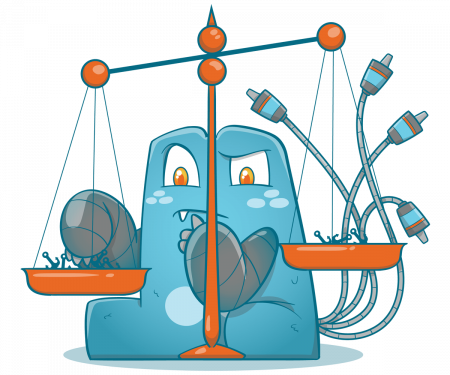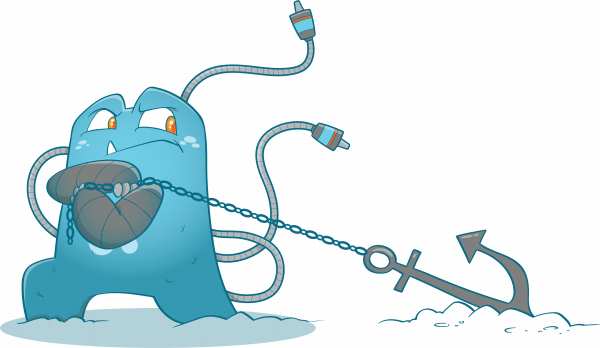A Quick Guide to Anchor Text Optimization and 5 Steps to Fix Over-Optimized Anchors

The way you use and implement your anchor texts makes an impact on your user experience and SEO performance. Thus, over-optimizing your anchor texts negatively affects your rankings on search engines. Anchor text optimization is often overlooked and it might be preventing your site from ranking higher!
If you are unsure what anchor text optimization is and why it matters? We provide you with a complete guide to anchor text optimization. You will also discover the different anchor text categories and why it is necessary to optimize your anchor text.

Anchor Text: What is it?
An anchor text is the visible, clickable characters in an HTML hyperlink. The set of texts is used to link the desired page to another document or pages on the web. Anchor texts commonly appear as a colored group of text, which sets them apart from the rest of the content. It is usually blue or depends on the company’s branding. But you can change your anchor text’s colors and style by going to the settings on your HTML or CSS.
An example of an anchor text looks like this:
In the HTML code, it looks like this:
<a href="https://www.internallinkjuicer.com/#get">Internal Link Juicer</a>Anchor texts help search engines and page visitors understand the context of the link’s destination. So it is highly recommended to use more descriptive and relevant anchor texts to your site.
Categories of Anchor Texts in Anchor Text Optimization
- Branded
These are links that contain a brand name in the anchor text. For example, “Internal Link Juicer” pointed to the homepage of Internal Link Juicer. SEO specialists find branded anchor texts beneficial because it helps increase brand visibility. It hints to users and search crawlers what the content is about.
- Naked URL
When you use the exact link of the target page you are pointing to. Naked URL does not provide much information for the readers or search bot on what the link is about.
For example:
- Page/Blog Post Title
This type of anchor text uses the article/blog or page title as the hyperlink. It type helps the readers and search crawlers get an idea of what the linked page is about. This strategy is valuable when you aim to improve your Google rankings.
- Exact-match Keywords
This category of anchor text is more important in terms of improving your SEO ranking. These hyperlinked texts represent the exact keywords that a page is targeting.
For instance, for Internal Link Juicer’s WordPress page, the exact anchor text is “internal linking plugin.” It goes like this:
Exact-match anchor text is a powerful type, and it adds significant SEO value to your page, helping your increase your ranking. Google values anchor text linked to a relevant keyword or context.
- Partial-match Keywords
Also known as phrase match, this type of anchor text includes a keyword for a specific page without any localization. It can also include longer variants of the keywords. Google values this type of anchor text because the keyword is present without being repetitive, and is also relevant to the linked content.
To make it clear, here’s an example: If your exact keyword is “internal linking,” you can use variants of keywords like “internal linking plugin” or “plugin for internal linking.”
- LSI Keywords
Latent Semantic Indexing or LSI Keywords are terms that have thematical relation on Google. You can find these LSI terms skimming at the search bar’s autocomplete queries or at the related searches below. LSI keywords are used as anchor texts to avoid using the same exact anchor text over again.
- Images
It works when you use an image as a link instead of using words and phrases. The search bots will crawl through your image’s alt attributes and consider it as anchor text.
- Generic
This type of anchor text uses random words and phrases. Generic anchor texts are usually call-to-action phrases like “Read More,” “Click Here,” or “Sign Up Now.” This group of texts is designed to be compelling to attract the audience’s attention.
Importance of Link Texts and Anchor Text Optimization to Search Engine Rankings
Links are significant to SEO. For instance, internal links are used to make your site structure clear to search engines. The text of a link helps search engines make use of your links – it gives them more context. Search engines use the link text as an indicator of the topic of the linked page. When the link text matches the key phrase, the search engine will not identify which article is the most relevant for that specific topic and should rank for that key phrase. Thus, anchor text is a factor in search engine rankings.
Aside from adding context to links for search engines, targeted link text for pages under the same category is also significant to your users. Anchor texts define the value of a link and tell them where it leads them. Utilizing the focus keyphrase in the link text can confuse both the search engines and the users. Therefore, you should avoid competing links.
Steps to Fix Over-Optimized Anchor Text
Anchor text optimization is sure to be important in SEO because it can help improve your search engine rankings. However, over-optimized anchor text can negatively impact SEO. The following are the steps in fixing it before your search engine hits your site.
- Look for the over-optimized anchor text. The first thing you have to do in re-optimizing is to look for your over-optimized anchor texts. You can make use of automatic plugins, like Internal Link Juicer, to easily look for undesirable texts. After you found the over-optimized texts, you can now start diluting keyword-optimized anchor texts.
- Dilute keyword-optimized anchor texts. Go through your site and dilute any keyword-stuffed anchor texts. You can perform this by increasing your text links.
- Make relevant text anchors. Instead of inserting text links on each page, only input a text link if relevant to the content on the page. Since Google released the Panda update, you can visualize how Google is into higher rankings to pages with original and valuable content. Including lots of anchor texts in your relevant content makes Google think something spammy is happening.
- Utilize synonyms. A smooth technique you can add to your strategy is to use alternatives to your keywords. Making anchor texts with synonyms of your relevant keywords can aid increase rankings for other keywords. They are an easy alternative to utilizing the same anchor texts. But note, do not abuse this method!
- Avoid future over-optimizing. For future reference, do not over-optimize any of your anchor texts. This saves you a big job later.

Best Practices in Anchor Text Optimization
The primary step in anchor text optimization is figuring out the desirable target anchor text distribution for your niche. Here’s how to do it broken down to its basics:
- Optimize for humans, not for robots
In anchor text optimization, always be sure to use anchor links that read naturally for humans. Remember, your target audiences are real people, so you need to use terms aimed at them.
Be careful of choosing keywords. Do not compromise your grammar only because a keyword has good search volume or low competition. Poorly written content can be a big turn-off to your audience, and it will sound so unprofessional.
- Place anchors on the hottest part of your page
Before continuing further with anchor text optimization, you need to know what parts of your page most of your page visitors are clicking or looking at. From there, you need to think of how you can insert a relevant anchor text and keep your visitors engaged.
Based on studies, most of the page visitors do not read the whole content of your page, but rather, they skim through the content and stop with whatever they find that caught their eyes. It will be a great idea to add your anchor texts in the subheadings, first few paragraphs, and images, as these elements are the most common focal points of a typical user.
- Analyze the Competition
A lot of SEOs discuss the need for a “natural” anchor text distribution. Upon describing it, it typically looks like this:
- 50% Brand & URL Anchors- only applicable to non-EMD/PMD sites.
- 25% Topic Anchors- “internal linking” would be a topic anchor for the keyword “high SEO ranking”
- 10% Target Keyword and Longtail Anchors- have only one word of a keyword phrase you want to rank.
- 15% Miscellaneous Anchors- inquire now, click here, learn more, etc.
Your anchor text plan is not what you usually expect. There are niches where you have to consecutively hit the site with target anchors for a month straight until you can break into page 1. It may seem to look like an anchor text SEO in 2005, but there are times that it is what the niche is asking.
- Do Not Use the Same Target Anchor Text More Than Once
In anchor text optimization, anchor text selection is never different from making any SEO decision. There is a need to ask, “Is what I am doing look natural?” In the earlier days of SEO, people who want to rank a “specific anchor text” would send all their anchors as “specific anchor text”- this doesn’t work anymore.
Money sites will have a distributed anchor text (50% brand & URL, 10% target keyword & longtail, etc.), but all 30 of their target anchors will stay as-is (specific anchor text, specific anchor text, specific anchor text,…). What are the chances of this happening naturally? The probability of 30 different websites linking to another website using similar target anchor text is significantly negligible. But if you have 500+ backlinks, it might tend to be “remotely possible.”
Do not use the same target anchor twice or more and mix up your keywords by putting up filler words. It would not only look more natural, but it would also give a better result with fewer links. Thus, it is better not to repeat anchors.
- Make Use of Your SEO Title Tag as an Anchor
The SEO title tag is something you fill out using your usual SEO management plugins. It significantly identifies how the SERP result listing shows your page’s title. This anchor text statistically occurs quite frequently. Forums (for instance) will rewrite your anchor text and default to the title tag if an external site is linked.
The advantage of using the title tag as an anchor is that if you are optimizing it the right way, it should be full of keywords. Thus, when you reference it, it is statistically a common anchor.
- Anchors Should Suit Link Types
Links may come from numerous categories of sources. These are a few:
- Blog articles
- Link lists
- Forums
- Comments
Again, statistically, some anchor types are utilized more often with various link types.
- When stuck, break up your keyword phrase
For instance, your keyword is “best gym in Canada.” When stuck in the rankings and aren’t moving no matter how many links you throw at it, break the phrase and send “best gym” or just the word “Canada.”
A Canadian newspaper may write an article about gym facilities and services in the area. They would not be creating anchors like “Canadian best gym” for it is already depicted, provided that they are a Canadian newspaper.
- Brand + target anchors
Another anchor type that usually shows (especially in physical product niches) is a mix of target keywords and Brand or URL. This type of anchor is an easy way for you to sneak in more target anchors while diminishing the risk of penalty because they are coupled with branded/URL terms.
- Optimize relative to your URL
Anchor text over-optimization also depends on the URL you link to (not only because of the niche-specific target anchor text distribution). You will have minimal room to send an anchor with the same keywords if your URL has those same keywords.
- Diversify URL anchors
Note that when establishing your links, the goal is to try to copy the anchor text profile that would have been built naturally. This is the reason you should create a profile of diversified anchor categories as per the niche average. These categories are branded, URL, target, misc, etc.
- Long Phrases
Always remember, anchors for contextual links are trying to define what they are linking. At times, you can do it with a word, or sometimes 10. You can also mix in longer phrase anchor texts now and then.
- Construct anchors in English, not SEO-ese
In ranking local terms, such as “fitness gym New York”, what people typically do is create backlinks with the anchor “fitness gym New York.” Your primary job as SEO is to make it look like you are not doing your SEO and to make it appear that individuals are linking to your sites on their own accord.
In the example “fitness gym New York,” no natural website would link like this. Rather, use “fitness gym in New York.” You are still getting credit for “fitness gym New York,” but you look natural while doing it, resulting in a better ranking boost.
- Synonym
This technique is utilized to obtain credit for your keyword while avoiding over-optimization. Search engines have built-in extensive amounts of latent semantic indexing (LSI) and synonym matching in their algorithm. These are very obvious, but you might neglect them at times.
- Surround anchor text with related keywords
Surrounding your anchor text with adjacent keywords, longtails, and synonyms may help increase the relevance of that link.
Doing Achor Text Optimization the Right Way
Over-optimizing internal anchor text on your site has negative consequences for your rankings. A search engine’s filters will identify you are spamming the system- this creates a greater tendency for your website to be hit with penalties and lose significant page rankings. Thus, it is essential to have a various selection of anchor texts.
With Internal Link Juicer, you can look for over-optimization signs, and relevant target keywords, analyze your website, detect the content that needs improvements, utilize the tools that help you create concise content, link internal pages, set it in motion and send it to your search engine to recrawl it.
Ensure everyone on your team is on the same page to avoid future problems. Visit our page to view our packages.






